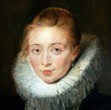Olga Godim's Blog, page 31
June 28, 2015
Fantasy Character Interview #21
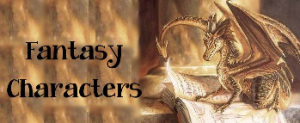 This series hasn’t had a new post since last year, but today I have an exciting new guest – Rhianna Pendragon, the heroine of Katherine Roberts’ children fantasy (age 9-12) series The Pendragon Legacy. The series includes four novels:
This series hasn’t had a new post since last year, but today I have an exciting new guest – Rhianna Pendragon, the heroine of Katherine Roberts’ children fantasy (age 9-12) series The Pendragon Legacy. The series includes four novels:
# 1: Sword of Light
# 2: Lance of Truth
# 3 Crown of Dreams
# 4: Grail of Stars
1. Tell us a little about yourself – name, profession, home, family, the usual.
My name is Rhianna Pendragon, though I had no idea about the ‘Pendragon’ part until my wicked cousin Mordred killed my father. It was quite a shock when Merlin brought King Arthur’s body through the enchanted mists and told me I was the king’s daughter and heiress to the throne of Camelot.
I grew up in Avalon with Lord Avallach’s people, and though I always knew I was human (I couldn’t do magic like my friend Elphin and I fell off a lot while I was learning to ride my mist horse), I’d always assumed I was just another unwanted baby some poor woman had left on a hillside in the human world for the fairies to find. But that ‘poor woman’ turned out to be none other than King Arthur’s queen Guinevere, giving me a far better claim to the throne than my cousin Mordred, who apparently thought he was the heir to Camelot until he found out about me. I must have ruined his day, because after that, he became my arch-enemy and sent dragons and his witch-mother after me, meaning I had to fight like mad to claim my inheritance… but that’s the next question, isn’t it? Oh, my profession? I’m a Warrior Princess.
2. What happened to you, so you ended up in these crazy adventures the novels talk about?
My cousin Mordred killed my father, King Arthur, in a duel at the Battle of Camlann, and Merlin decided that would be the perfect time to tell me who my real parents were. I wish he’d told me sooner, because even though I eventually got to meet my mother, Queen Guinevere, I’d have liked to meet my father while he was still alive! As it is, I had to make do with King Arthur’s ghost.
Since Mordred’s witch-mother Morgan le Fay had put a dark spell over the human lands, Merlin sent me on a quest to find the four magical Lights – the Sword Excalibur, forged in Avalon; the Lance of Truth, made by the hands of men; the Crown of Dreams, which hides the jewel of Annwn; and the Grail said to hold all the stars in Heaven – to rescue my mother and Camelot from Mordred. Fortunately, I had some good friends to help me: Lord Avallach’s son Elphin, who can do magic, my squire Cai, whom none of the other knights at Camelot wanted, and my maid Arianrhod, who used to be Morgan le Fay’s maid. Oh, and my fairy horse Alba, of course. Dragons? Bring them on!
3. You’ve probably been too busy fighting dragons and searching for the Grail to think about marriage, but is there anyone special in your life? Who’s going to be the next king of Camelot?
Well, Mordred fancied himself for that role, obviously. He even once (in a rare moment when he wasn’t trying to kill me) suggested we got together romantically. Yeuch! I guess he must have been handsome enough before my father sliced his face with Excalibur in their final duel, but he’s older than me and he’s my cousin. I really like Prince Elphin, though… he can cast a spell on me any time with his enchanted harp. He has soft dark curls, green eyes, and six sensitive fingers on each hand. Mixed marriages, do they ever work? I’m a bit young yet for that sort of thing but I sometimes wonder what our children would look like.
~~~~~~~~~~~~~~~~~~~
You could find out more about Katherine Roberts on her Website, her Blog or her Twitter page.
Buy the books at Amazon.co.uk:
Sword of Light
Lance of Truth
Crown of Dreams
Grail of Stars


June 23, 2015
Fantasy artists – Laura Diehl
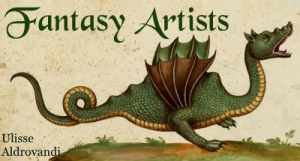 My guest today is Laura Diehl, an American fantasy artist currently living in Germany. Laura illustrates children books. Like many artists, she’s enjoyed drawing since she was very young. She used to paper the walls of her parents’ dining room with her crayon mermaids and unicorns, and her love for such creatures eventually became a career.
My guest today is Laura Diehl, an American fantasy artist currently living in Germany. Laura illustrates children books. Like many artists, she’s enjoyed drawing since she was very young. She used to paper the walls of her parents’ dining room with her crayon mermaids and unicorns, and her love for such creatures eventually became a career.
Laura, what started you as a fantasy artist and book illustrator?
I first knew I wanted to be a book illustrator in 3rd grade, after our school principle read Chris Van Allsburg’s picture book The Polar Express to us.
 Are you a full-time artist? What else do you do?
Are you a full-time artist? What else do you do?
Yes, I do freelance illustration as my day job: fantasy book covers and interiors for clients. As my art hobby, I’m working on a children fantasy webcomic called StarSpun.
You seem to work mostly as a children fantasy artist. Why children fantasy? Ever tried to branch out into adult fantasy?
Children’s fantasy art is where I’m most happy. I love the bright colors that accompany fantasy subject matter for younger ages. Earlier in my career, I did all sorts of fantasy art but I found I really didn’t like subject matter that was very dark or gritty, which eliminated much of adult mainstream fantasy.
 Do you like drawing people or animals? Faces or figures? Or landscape and mood are more important to you?
Do you like drawing people or animals? Faces or figures? Or landscape and mood are more important to you?
I like drawing people, especially child characters. Animals are fun too. I tend to prefer figures over just faces. Landscape and mood are extremely important to me in conveying the magic of a scene.
What do you start with: a theme or a story?
It depends if the art in question is personal work or commissioned by a client. For my personal work, I normally start with an intriguing theme or visually striking idea. For client work, I generally take manuscripts that don’t yet have covers and craft something fitting.
For a book cover, what do you need to know about the book? Do you read the book first?
Again it depends. Some clients have very specific cover images in mind already, others want me to skim the manuscript and suggest cover ideas… and sometimes the book isn’t even finished yet, so I am just given a few paragraphs and descriptions to work from.
 What is your process from an idea to a book cover? What tools do you use? Do you use stock images or create everything from scratch?
What is your process from an idea to a book cover? What tools do you use? Do you use stock images or create everything from scratch?
I create everything from scratch for my custom paintings. My process is pretty set at this point. I generally start from either client descriptions or the manuscript itself. From this, I work up a number of small possible covers in a series of thumbnail sketches. The client and I then choose the strongest of these to take to the rough sketch phase. In the rough sketch, I block out the elements more distinctly and clarify the composition. At this point, I gather many reference images and often shoot some of my own as well for the figures. I then use these things to draw a much tighter and cleaner sketch that will be the blueprint of sorts for the cover. This tight sketch then gets colored to show a rough idea of what the color scheme and lighting will be for the cover. Upon client approval of these, I start in on the final painting, which is a good 50% of the project time. At this stage, it is the meticulous matter of combing through the image and lighting and painting each element. The final touch at the end is any lighting or magic effects that the scene warrants.
 How important is font for a book cover?
How important is font for a book cover?
Very important. It needs to work with the image and also be very clear for the reader.
What do you think about pre-made covers?
I guess they work for some authors in a pinch with very limited budgets, but I can’t see them being nearly as satisfying for authors or potential readers as a painting that is made custom for the book.
Do you work exclusively on computer? On paper? Which method do you like best?
My workflow is 99% digital, using Photoshop and a big Wacom Intuos. Sometimes though, I will start an image with some ink-drawn thumbnails in my sketchbook, which I photograph with my phone and bring into Photoshop.
What is your favorite image manipulating software?
Hands-down, it’s Photoshop.
I looked at many artistic portfolios and I noticed an interesting trend: work done on commission is often better than work done from the artist’s imagination. Do you agree? Why or why not?
I disagree. From my experience, it’s the other way around. I’m always drawn to the pieces that are most purely from an artist’s own vision. With commissioned work, this can sometimes get muddied by client and project constraints, which may result in less strong work. The images of mine that have gathered the most acclaim, awards, and attention, have all been personal pieces.
What social media do you like best? Use most?
Facebook at the moment. I have a growing fan following there and l like how I’m not as limited in the images or amount of text I can post.
You write a webcomic StarSpun. Tell me about it.
The genre of the webcomic is children’s fantasy. I’ve been posting it online since June of 2014, so it’s a little over a year old. The idea was originally inspired by a single personal image I painted of two children by a river full of stars. I started asking myself questions about these characters and their world, and the idea grew and evolved into the story I have now, which I’m both writing and illustrating.
I’m not by any means the first one to do a webcomic, though I am a little unusual in the scrolling format and painted style. I’ve got a number of fans who subscribe for updates via an e-mail list but many more who keep up with the comic through social media. I’m releasing the comic one chapter at a time and trying to average about one chapter every two months. They are very time intensive to create. Chapter 7 is just about ready for release.
Do people use your art without permission? For example, on Pinterest? Or on their websites? What do you think of that?
As long as it is properly credited/linked back to my site, the art is not displayed for commercial purposes, and the original image is not altered, I’m happy with social media sharing. It always saddens me, when the artists aren’t credited along with their beautiful art.
Thank you, Laura, for talking to me and sharing your charming paintings.
~~~~~~~~~~~~~~~~~~~~~~~~~~
See more of Laura Diehl’s art here:
Laura’s website
Laura’s StarSpun webcomic
Laura’s deviantArt page


June 21, 2015
Interview about humor
Audra Middleton interviewed me on her website. We talked about humor in fiction, and specifically in my collection of short urban fantasy stories Squirrel of Magic.


June 17, 2015
Motivation – why they do it
 Coming up with serious goals for your heroes is not enough to make a story shine. You have to know the characters’ motivation – the stakes. Why do they need to reach their goals? What is at stake for them? What will happen if they don’t get what they strive for?
Coming up with serious goals for your heroes is not enough to make a story shine. You have to know the characters’ motivation – the stakes. Why do they need to reach their goals? What is at stake for them? What will happen if they don’t get what they strive for?
 Sometimes, the protagonist’s personal happiness is at stake. Other times, it might be the safety of the world, or one child’s health, or even a woman’s smile. In any case, the stakes must be high enough in the hero’s mind so he can’t imagine not trying, not doing his best to reach his goal.
Sometimes, the protagonist’s personal happiness is at stake. Other times, it might be the safety of the world, or one child’s health, or even a woman’s smile. In any case, the stakes must be high enough in the hero’s mind so he can’t imagine not trying, not doing his best to reach his goal.
In my science fiction short story NUDE BARGAIN, the protagonist’s original goal is to sell beautiful sculptures, and her motivation is to get rich. Then pirates attack her space ship, and her goal changes. Now she wants to trick the pirates, because her new motivation is to save her ship and crew, even if she loses her profit in the process. The stakes become much higher than before – everyone’s life and freedom. To learn how she achieved her new goal, read the story here.
 In my magic realism short story AMBER SPIRIT, the heroine is a ghost, a spirit whose body died recently. Her goal is to find a new living body. Her motivation is much trickier: she needs to write. She has always had stories in her head but never wrote them down when she was alive: too busy with children, family, work, etc. Now, the Powers That Be wouldn’t allow her spirit to leave Earth until she fulfilled her destiny – wrote all the stories in her mind. You can read the story here.
In my magic realism short story AMBER SPIRIT, the heroine is a ghost, a spirit whose body died recently. Her goal is to find a new living body. Her motivation is much trickier: she needs to write. She has always had stories in her head but never wrote them down when she was alive: too busy with children, family, work, etc. Now, the Powers That Be wouldn’t allow her spirit to leave Earth until she fulfilled her destiny – wrote all the stories in her mind. You can read the story here.
Whatever your characters’ motivation is, it should be powerful enough to force them out of their comfort zone, into action and change. What drives your characters? Why do they have to overcome all those obstacles you’ve built on their way? What motivates them?


June 3, 2015
My percentage sucks
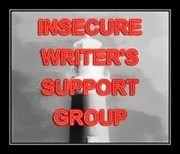 A post for the Insecure Writer’s Support Group
A post for the Insecure Writer’s Support Group
I have just started a new series on my blog – interviews with fantasy artists. I contacted a few artists but so far got only two reply. Two artists out of four agreed to an interview, and only one sent me her answers. Here is the interview itself with the wonderful artist Ravven.
I’ll contact more artists soon and I hope some will be willing to appear on my blog but I wonder: why is the percentage of feedback always so low? I have over 150 followers on my website, a modest number to be sure, but when I publish a new post, I only get a few ‘Likes’ or comments, less than 10% of my subscribers. Does it mean I say nothing interesting? Or don’t offer enough incentive? Or don’t advertise sufficiently?
What is your average feedback percentage?


May 31, 2015
A new 100 – the time for romance
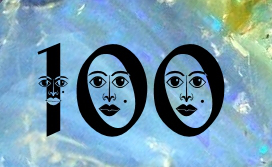 I just looked at my blog stats and realized I’ve already published over 100 blog posts. I should’ve celebrated the #100, but sadly, it’s passed unnoticed. I still want to do a special post for the occasion. When I started the blog, I wasn’t even sure I have it in me to put my thoughts out there, but I do. Who would’ve guessed?
I just looked at my blog stats and realized I’ve already published over 100 blog posts. I should’ve celebrated the #100, but sadly, it’s passed unnoticed. I still want to do a special post for the occasion. When I started the blog, I wasn’t even sure I have it in me to put my thoughts out there, but I do. Who would’ve guessed?
For this centennial post, I want to talk about the new story I’m writing. The idea came to me recently, and I think it would be a new genre and a new length for me – a departure on all counts. I’m writing a Regency romance in a novella format, taking place at Christmas. I have never written anything like it before, don’t even know the markets for such stories.
Would there be magic, as in the majority of my stories? I’m not sure. Most of the plot-line is already mapped, except for the resolution of the main conflict. If magic will make its appearance in this tale, it would be in the end. It’s not needed anywhere else.

Cupid by Carle van Loo
Although I don’t know yet how the heroes would handle their predicament that prevents their happily-ever-after, I do know I will find out soon. I have another problem with the story though. I don’t know how to write smut. Should I? Could it be a clean romance without lust or intercourse?
It seems that nowadays, any story in the romance genre requires a certain percentage of pages dedicated to dirty scenes. I’ve never written such scenes before and although as a reader, I enjoy a good romance, I always skim steamy sex in my reading. For me, those scenes are boring. They stop the action, while the author (any author) concentrates on silky thighs, buds of feminine ecstasy, and explosive climaxes. I suppose I could fake the thing but should I? Maybe instead I should look for a collaborator to write a hot and spicy bonking act for my characters? Short and salacious, anyone? Your name would be in the byline, of course, alongside mine.
I also have another quandary: I can’t come up with a good name for my female protagonist. I’ve tried several placeholders, but so far, no name really fits my heroine. She is twenty-four. She has brown hair and hazel eyes. She is average in build and pretty but not beautiful. No dowry and no rich relatives to take care of her, while she cares for her two younger sisters. There is also an entailed estate involved and a dashing officer, resigned from the army after being severely wounded. All the requisites of a solid Regency spin, plus some surprising twist to make it original (I hope).
Perhaps someone would suggest a good Regency name.


May 26, 2015
Fantasy artists – Ravven
 My guest today is Ravven. Originally from the US, she now lives in the UK and loves it. She’s always enjoyed drawing and painting but she only got into digital art while working as a web designer for Musician’s Friend. For the past four years, after a successful career as a web developer, she has been a freelance artist.
My guest today is Ravven. Originally from the US, she now lives in the UK and loves it. She’s always enjoyed drawing and painting but she only got into digital art while working as a web designer for Musician’s Friend. For the past four years, after a successful career as a web developer, she has been a freelance artist.
Thank you, Ravven, for coming to my blog. How do you feel about being a full time freelance artist?
I must say that if you get the chance to work for yourself, do it at least once in your life. I’m a lot poorer than I was before but I’m a lot happier. You learn a lot about discipline when you are your own boss.
 What subgenre of fantasy attracts you most?
What subgenre of fantasy attracts you most?
I love reading and painting urban fantasy and dark fantasy and am a huge sci-fi and steampunk fan. I’m not a vampire/shifter fan as I think they’ve been overdone. I love YA and MG books and am not embarrassed at all to buy and read kids’ books. You’ll find some of the best fantasy around in MG books.
Do you like drawing faces/figures? Or landscape and mood are more important to you?
I love people’s faces and the shapes their bodies make. I really admire some conceptual or non-figurative art but I personally seem to be drawn to people. Mood is very important too, which is why I tend not to like close-up images (for example, the ‘bare abs’ covers prevalent in paranormal fantasy). They leave no room for theme, mood, or emotion.
 Do you work with a theme in mind? Do you make book covers? Games?
Do you work with a theme in mind? Do you make book covers? Games?
I haven’t done any artwork for games yet, mainly book cover art and some CD covers. Theme is where I start, as I think it is the most important thing. You have to know what the target audience is, a synopsis of the book, and what the author considers to be the main theme: hope, loss, love, loneliness…
Do you work exclusively on computer? On paper? A combination of both? Which method do you like best?
Everything I do is digital. I work in Photoshop using a Wacom tablet. I use a mix of commercial stock and images I have shot myself. After the image has been composited, it is overpainted using the tablet.
When you work on a book cover, what do you need to know about the book? Do you read the book first?
I don’t have time to read the books, unfortunately, as I have such a heavy workload. I have a list of questions I ask prior to accepting a cover commission. One of the most important things is to know what covers the author likes personally. That gives a better feeling for what they want than a description.
 I think that work done on commission is usually better than work done from the artist’s imagination alone. Do you agree? Why or why not?
I think that work done on commission is usually better than work done from the artist’s imagination alone. Do you agree? Why or why not?
It depends. If the author and artist click and a level of trust is achieved, then it can be the best thing in the world. You get amazing art from a partnership like that! On the other hand, sometimes authors want to use artists as a kind of organic software to design a cover, and that scenario is usually so constrained that it adversely affects the final image. In that case, you’ll get better work when imagination is allowed to run freely, but it all depends.
What is your process from an idea to a book cover? What tools do you use? Do you use stock images or create everything from scratch?
I always use commercial stock. After I get the initial creative brief I will start looking at stock and putting backgrounds together for mockups. The initial rough mockups are unpainted and usually use watermarked stock. The author will need to use their imagination a bit, as piecing together and painting costumes is very time consuming, and I prefer to do that on the final version. After we’ve chosen a model and the overall concept, I’ll work on a final version and at some point will provide proofs with various fonts, text treatments and so on. I wrote more about the process here.
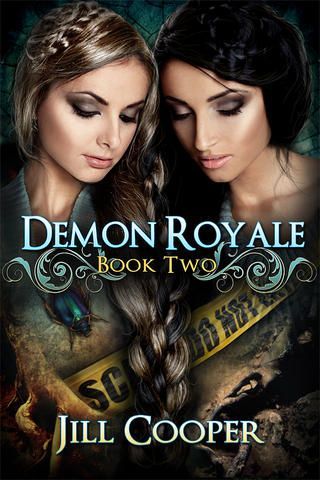 How important is font for a book cover?
How important is font for a book cover?
I think it is very important. Types of fonts vary from genre to genre and they also go in and out of style. Readability at a small size is the most important thing for all cover text.
What do you think about pre-made covers?
I like premade covers and plan to do more of them. It’s like anything else – you can find them quite cheaply, but generally you get what you pay for. As long as the artist has put some real work into the cover they’re great.
What social media you like best? Use most?
I mostly use Twitter. I do have a FB page for my art, but I mostly use FB to keep in touch with family and friends back home. Pinterest is great for inspiration boards and collecting things such as covers that I love. G+ hasn’t been that useful for me personally. I do have a blog that I’ve kept for over a decade, but recently I’ve been terrible at keeping up with posting.
 Do people use your art without permission? For example, on Pinterest? Or on their websites? What do you think of that? Would you offer some for free?
Do people use your art without permission? For example, on Pinterest? Or on their websites? What do you think of that? Would you offer some for free?
It always happens. I don’t care about Pinterest, as long as they aren’t trying to claim ownership of the image. Same with websites – as long as they’re attributing the original artist, I don’t think it harms anyone. I’ve only found one person who was trying to claim my work as their own, and they immediately took the images down. I do offer cover work for free when I can, and in recent years ran a contest with other industry professionals (writers, editors, etc.) to give a first-time author a complete cover and editing package.
Thanks, Ravven. What a great interview, and your images are truly fantastic.
~~~~~~~~~~~~~~~~~~~~~~~~~~~~
You can find Ravven here:
Website
deviantArt
Twitter
Pinterest


May 24, 2015
Fantasy artists – introduction
 As back in time as ancient Greece, artists enjoyed painting mythical creatures. Chimeras, dragons, and unicorns abound in the art of many cultures all over the world, from China to Russia to Europe. In that, artists often followed legends of their countries.
As back in time as ancient Greece, artists enjoyed painting mythical creatures. Chimeras, dragons, and unicorns abound in the art of many cultures all over the world, from China to Russia to Europe. In that, artists often followed legends of their countries.

Firebird from Fedoskino, Russia
Kitsune foxes trick men in Japanese woodblocks, Firebirds soar across the Russian folk art, dragons populate European medieval manuscripts, and gargoyles grin atop the Notre Dame in Paris.
Fantastic art still attracts the adventurous souls of many artists and appeals to their cravings for unusual and fabulous. Websites like http://deviantart.com and http://pinterest.com are full of fantasy art. Those images take us to the worlds beautiful or scary, whimsical or gloomy, but always unique.

Gargoyle from Notre Dame – Photo by John Cornellier, wikipedia
I’d like to pay tribute to these wonderful artists, to showcase them for the wide-spread community of fantasy fans. I’m starting a series of posts Fantasy Artists on my blog. In the 14th century, Ulisse Aldrovandi painted surprisingly realistic dragons in Italy. One of them became the logo of this series.
In a few days, my first guest will make an appearance. Stay tuned.


May 21, 2015
Conflict: external vs. internal
 Every writer knows that conflict is necessary for a story. Without conflict, there is no story. To make a writer’s job more interesting, conflict can take many forms, and the more forms of conflict you have in one story, the more complex the plot. Here are several common forms of conflict:
Every writer knows that conflict is necessary for a story. Without conflict, there is no story. To make a writer’s job more interesting, conflict can take many forms, and the more forms of conflict you have in one story, the more complex the plot. Here are several common forms of conflict:
Protagonist against villain
Protagonist against nature
Protagonist against society
Protagonist against antagonist (they’re both good, but their goals are at cross purposes)
Protagonist against himself
This is not a comprehensive list but it is fairly representative of the majority of known stories. The numbers 1, 2, 3, and 4 are all variations of external conflict: our hero against an outside resistance to his goals. Number 5 denotes an internal conflict. It is the most fascinating form of conflict, the one inspiring the most controversial stories and the most engaging characters. In #5, the hero has two desires or two great needs, and they contradict each other. He must make a choice and sacrifice one for the other.
In my fiction, I’ve utilized mostly ##1, 3, and 5. Number 4 is often employed in romance novels, which I haven’t tried so far. I also haven’t had #2 in any of my stories, although I’m thinking about an earthquake. Number 5 is by far my favorite, and I’ve used it in several stories.
In my novel ALMOST ADEPT, the protagonist Eriale is in conflict with herself. On one hand, her beloved is facing a fight of his life against overwhelming forces. Without her magical help, he might be killed. On the other hand, a group of young apprentices are in mortal danger from an evil blood mage, and Eriale is the only one who could save them. Whatever choice she makes, the consequences might be devastating.
 In my short story WINTER CHOICE, the protagonist, a young magician Svetlana, is in love with a handsome duke. Unfortunately, there is a snag in her romantic bliss. Someone close to the duke is a murderer, and Svetlana has been sent to the duke’s demesne specifically to find and punish the villain. If she follows her duty, she will have to forfeit her love. If she follows her heart, the culprit will escape retribution. Her two goals can’t coincide. She is torn, but a decision must be made. To see what she chose, read the story here.
In my short story WINTER CHOICE, the protagonist, a young magician Svetlana, is in love with a handsome duke. Unfortunately, there is a snag in her romantic bliss. Someone close to the duke is a murderer, and Svetlana has been sent to the duke’s demesne specifically to find and punish the villain. If she follows her duty, she will have to forfeit her love. If she follows her heart, the culprit will escape retribution. Her two goals can’t coincide. She is torn, but a decision must be made. To see what she chose, read the story here.
What about you? What types of conflict have you used in your stories? Could you think of any type I haven’t mentioned?


May 11, 2015
More than one goal makes life interesting
 In the last Writing Tips post, I talked about character goals in fiction. Of course, a novel is rarely sustained by one goal. More often, it’s either a succession of goals for one hero or a goal for every leading character, when we have more than one. I usually have one lead character, sometimes two, but my protagonists tend to have more than one goal, even in short stories.
In the last Writing Tips post, I talked about character goals in fiction. Of course, a novel is rarely sustained by one goal. More often, it’s either a succession of goals for one hero or a goal for every leading character, when we have more than one. I usually have one lead character, sometimes two, but my protagonists tend to have more than one goal, even in short stories.
In my novel EAGLE AN GARDE (which won the 2015 EPIC eBook Award in the Fantasy category), the hero Darin has several goals, increasingly difficult as the story progresses.
He wants to regain his ability to fight after a severe wound.
He wants to help a young witch to escape religious fanatics.
He wants to save the elven traders at a fair from bullies.
He wants to thwart a sinister kingdom-wide plot against magic.
His goals often overlap in time but upgrade in meaning. In the first one, his only beneficiary is himself. In the second, one young witch. In the third, a group of elves. In the last, the entire kingdom. This escalation in the goals’ intensity is paramount to keep the tension high, but it’s not the only way to keep a story interesting.

art by Samuel Baruch Halle
Sometimes the heroine’s several goals intertwine, and sometimes they contradict each other, creating an inner conflict and forcing her to choose. In my short story THE ANSWER IS YES, the heroine’s initial goal is to build a peaceful life with her lover. He is a thief, and she wants him to stop his criminal activities. She wants a secure family. Then something happens, and she must change her goal, upgrade it. She can’t have a peaceful family life with him anymore. To save his life, she has to abandon him for a road unknown. How would she choose? To learn, read the story here.




